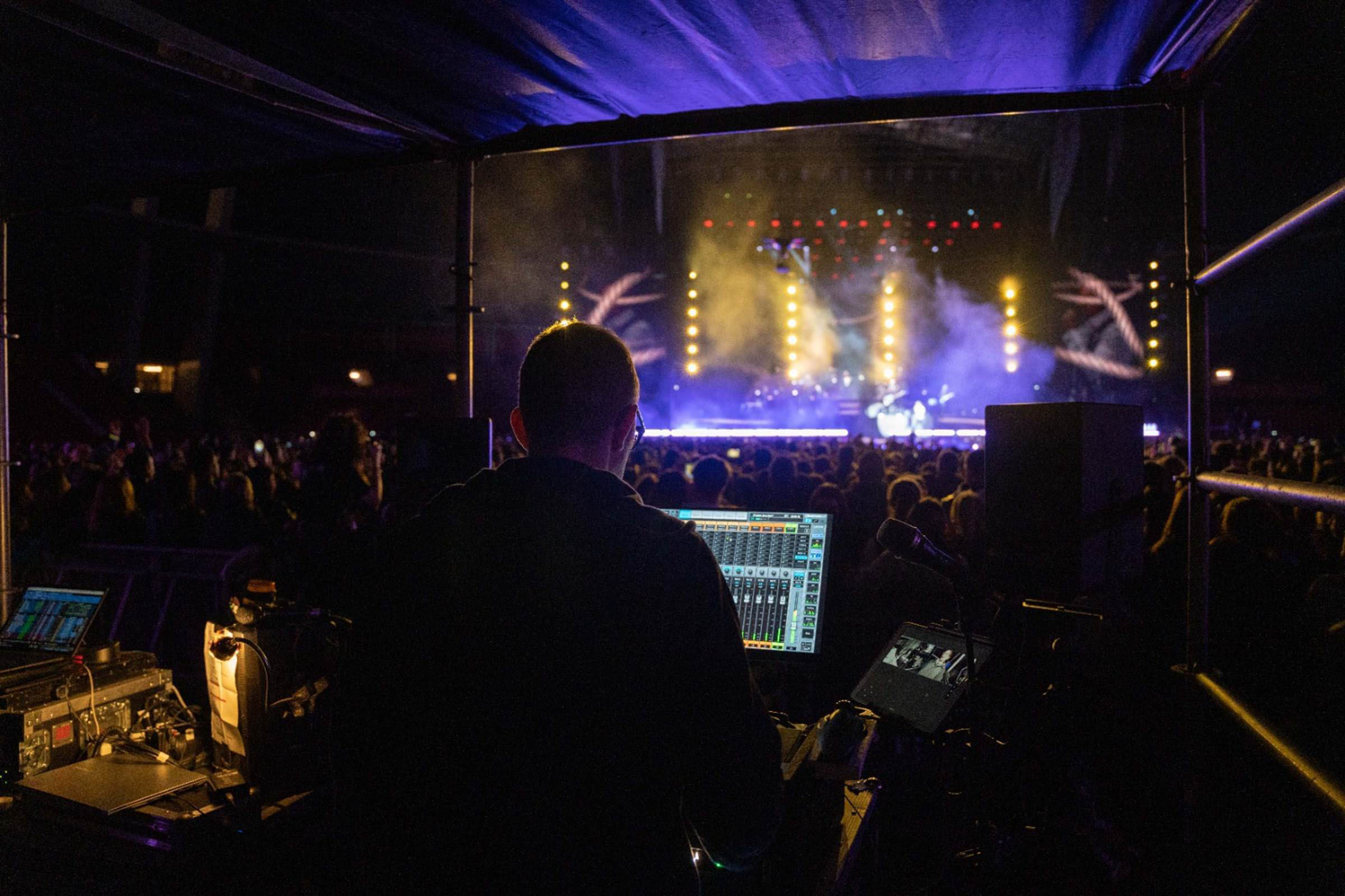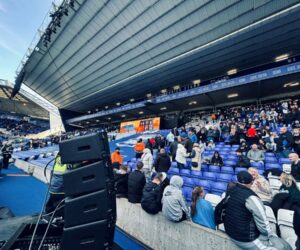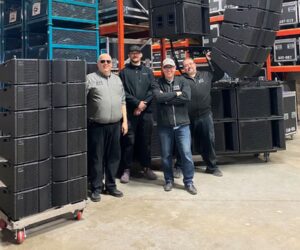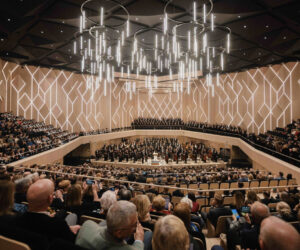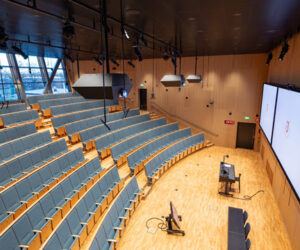A recent 20th anniversary concert by GRAMMY-winning singer, songwriter and actor David Bisbal at Powerhorse Stadium in Almeria, Spain, broadcast on Movistar Plus+, saw live mix engineers Fabrizio Piazzini (front of house), Ian Alvarez (monitors) and Marc Llopis (broadcast) working with the Waves eMotion LV1 live mixer platform.
“A few years back we started using the LV1 on fly dates, and we quickly realized (even the artist) the exceptional quality of the mix engine,” says Piazzini. “No other console comes close to the sound quality of the LV1; it’s so punchy and big, and it has a huge stereo image with pretty much endless headroom. I used to own two consoles – one for shows and one for prepping show files at home – but now, I only need one LV1 console and I can take it home with me in the taxi!
“Also, being able to record multitrack without any added interface is a big plus; all the ops had a recording computer, and if one forgot to record, just dial in one of the other laptops on the network and switch to input B and away we go!” he continues. “After the rehearsals, I would pack away my console quicker than covering it with tarp! How about that as an easy setup. The other advantage was the scalability. The broadcast plan only came clear a week before rehearsals. After designing the system with the help of the amazing team of File Application Specialists at Waves, it was so easy to integrate into our plan; just add a fiber and LV1!”
Piazzini’s setup includes the eMotion LV1 Live Mixer-64 Stereo Channels with one DSPRO StageGrid1000, a DiGiGrid IOC, a Waves Titan SoundGrid server, some outboard for the main vocal, a Waves FIT Controller for eMotion LV1 and one screen.
Monitor engineer Alvarez adds, “I still remember when I first encountered the LV1. The artist was more than fine with all his mixes from before, so I tried to be as close as I could to it… A/B tests on mixes instantly made me notice how wide the stereo image can be, and believe me, I was absolutely shocked about that. Also, the sensation of clarity in the digital process allows me to hear details, mostly in FX such as delays or reverbs, that I never heard before. Its DSP possibilities, scalable options and sound quality, of course, tipped the scale in favor of LV1.
“I’ve been using eMotion LV1 systems for a couple of years now, mainly for its portability. David Bisbal is an international artist that regularly tours worldwide, and both Fabrizio and I were searching for a portable system under 32 kg so we could carry it on the plane. Using the LV1 allows me to use exactly the same console everywhere, not just the same model, but the same hardware and preamps. Maybe this is not a must for everyone, but David has an amazing ear; trust me, it’s out of this world. He is also an artist that has a crystal-clear vision of what he wants to hear in his mixes. The consistency mixing on the same system all over the world is priceless. Also, being able to take the console to my hotel room and improve my mixes while we are on tour makes it really fast to develop quick and precise changes, whatever and whenever needed.”
At the end of his snake Alvarez has the console (one screen and a FIT controller) with a Waves Titan SoundGrid Server, with all three engineers sharing the same signal from two DSPRO StageGrid 4000. “Fabrizio and I always work in that way, no matter what the system is, as for us, it is important to avoid unnecessary connections to our audio chain,” he notes. “I also use a SoundStudio STG-1608 (not shared) for analog inserts, talkbacks and some backline mixes. We have a shared DiGiGrid MGB that carries all the signals from a Cymatics for backing tracks. My last connection is my laptop for multitrack recording and virtual soundcheck. But most of the time, Fabrizio and I are sharing the same laptop for that, so having the same signal running everywhere allows you to hear your mixes in a similar way that the artist is going to hear it during the real show, with FOH and monitors going at the same time, which is way better. With the LV1, this is just one click away, just changing the laptop on the socket.”
Broadcast engineer Llopis setup includes an eMotion LV1, a Waves Axis host computer, a Waves Extreme SoundGrid Server, a Waves FIT Controller for eMotion LV1, a DSPRO StageGrid 4000 for connections with to the OB truck UM and a MacBook Pro for virtual soundcheck.
“FOH and MON were already using this system that they had prepared for the artist’s tour. Instead of using a passive or active split system, it seemed to me that to integrate a third LV1 into the network was the most comfortable and practical thing. Integrating fiber optics into the system made it comfortable and practical. Also, I was able to use the same FOH session as a starting point, with the patch already done and a structure similar to what I needed for broadcast. Literally in 10 minutes, it was already playing, and from there I was able to start working on it to get a more compressed and packed mix than FOH. I also like that the structure of the console is very clear, with the channels, groups and auxiliaries ordered as in an analog console, despite its real flexibility.
“The LV1’s sonic quality surprised me from the first contact with it, astonishing me with the quality of the sum and the frequency separation, giving an enormous dynamic space and range. Despite being a purely software solution, it’s one of the closest analog summing experiences I’ve had on a digital audio platform. The eMotion LV1 has an advantage over other platforms – much more evolved – in that it uses the same protocol both to move the audio and to process it, in such a way that there are no intermediate conversions as there are in most live audio platforms, and that influences the final sonic quality. When I understood this, it gave me a clearer explanation as to why the sound of LV1 was such a differentiator.”


